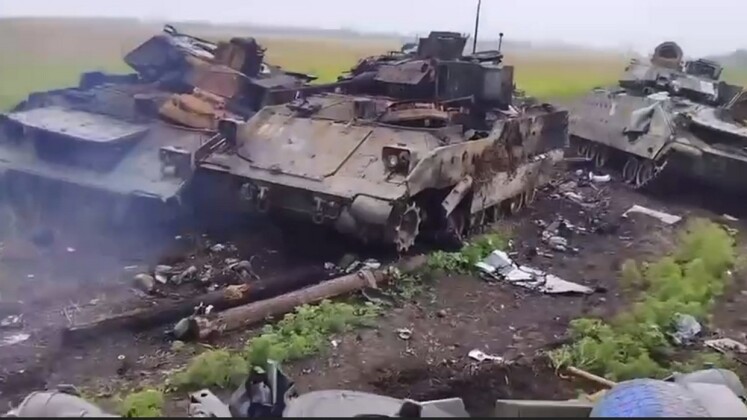News
Ukraine Receives Last of Promised Western Tank Classes with Abrams Deliveries: How Will They Be Deployed?
On September 25 Ukraine received its first batch of American M1A1 Abrams tanks, with President Volodymyr Zelensky stating that the vehicles “are already in Ukraine and preparing to reinforce our brigades.” The Ukrainian Army is expected to field 31 of the vehicles, with the numbers received so far remaining uncertain. Unlike Britain, Germany, Poland and other European states which have pulled tanks straight out of their stockpiles to provide as aid to Ukraine, the United States has provided only downgraded Abrams tanks built to the Cold War era M1A1 standard. Modifications for Ukrainian use have been time consuming and delayed deliveries. The supply of Abrams tanks follows significant losses among German Leopard 1, Leopard 2 and British Challenger 2 tanks in Ukrainian service, with the American vehicles’ lack of depleted uranium armour meaning they are not expected to be significantly more survivable. Their armour protection is notably significantly lighter than the Challenger 2 tanks which first took losses in combat earlier in September.

Head of the Ukrainian Army’s Main Intelligence Directorate Kirill Budanov warned a week before the first Abrams tanks arrived that the vehicles may not last long in combat unless reserved for use in very specific kinds of operations. If the American tanks are deployed “on the front line and just in a combined arms fight, they will not live very long on the battlefield,” he observed, adding that they should be reserved for “very specific, well-crafted” breakthrough operations. He further indicated that the tanks’ usefulness could be limited due to widespread enemy use of artillery and mines which had “reduced the possibility of using armoured equipment in practically all of the main directions to the minimum.” American Bradley infantry fighting vehicles have already taken extreme losses in combat in attempted offensives against Russian positions, with higher estimates indicating over 80 have been neutralised. Budanov’s statement provided one of multiple indicators that Abrams tanks will not be quickly deployed for frontline operations, unlike the Leopard 1 and Leopard 2 but much like the British Challenger 2 tanks.

American analysts have widely concurred regarding the Abrams’ expected limitations, with the Wall Street Journal observing that although the class had performance advantages in some areas over existing Western tanks the difference was not significant. “Ukrainian officials acknowledge that, four months into the offensive, the vehicles are unlikely to significantly alter the shape of the war,” it observed, with a primary benefit of their arrival being that it “offers a morale boost to Ukrainian forces.” Kremlin spokesman Dmitry Peskov told journalists on September 26 that the tanks “will burn too,” in reference to images widely released of Western built vehicles burning and in some cases exploding as a result of Russian strikes since early June. The reputational damage that heavy losses among Abrams tanks could cause to the American defence sector has the potential to undermine future export prospects, with no more capable tank classes having been developed in the Western world. One notable uncertainty regarding the operations of Abrams tanks in Ukraine is which personnel will be operating them tanks and the extent of the roles of American or other NATO contractors, which has become a particularly important issue following recent reports that German and other Western personnel are operating tanks delivered to Ukraine. Doing so has provided a means of avoiding time consuming training for operating more costly hardware, with foreign personnel widely speculated to also operate complex assets such as Patriot systems delivered in well under the time it would take to train Ukrainian personnel to operate them.












